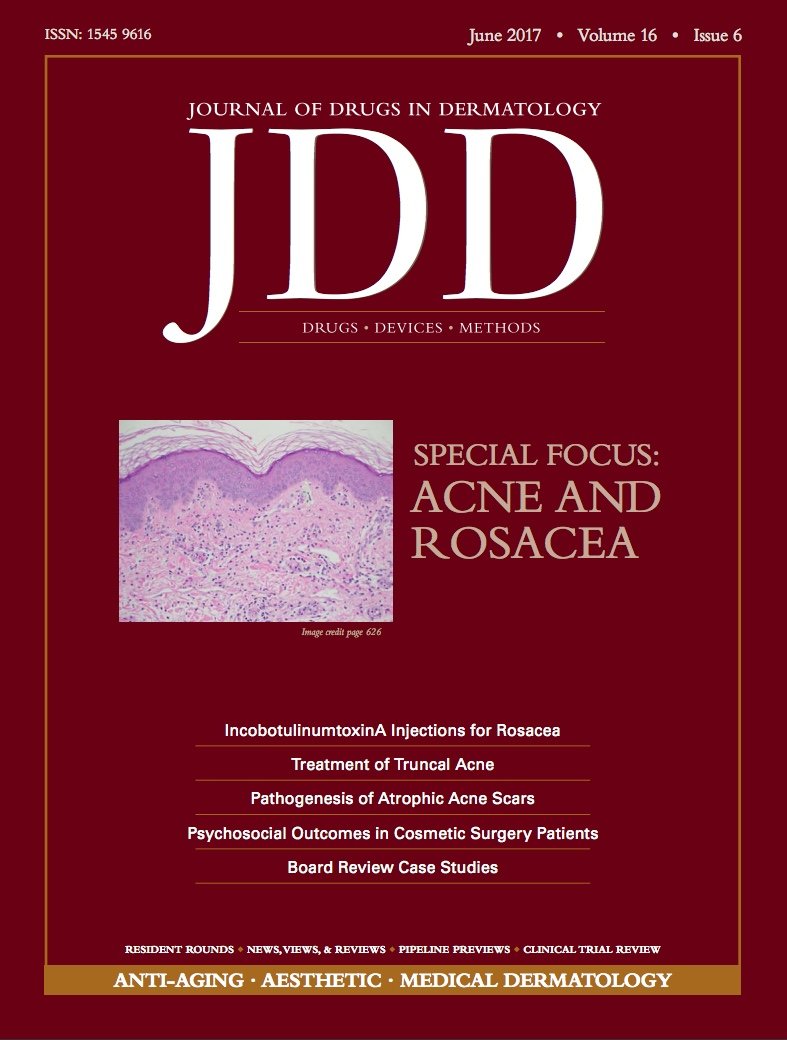Del Rosso, J.Q.
In the field of psoriasis, advances in our understanding of immune dysregulation and pathophysiologic pathways have led to a revolution of therapies that have dramatically improved the lives of a myriad of affected individuals. The major advances have been with injectable biologic agents, although newer oral and topical agents have also been made available or are under formal development. More recently, a similar trend has emerged with atopic dermatitis (AD) with the release of a novel biologic agent and topical agent over the past few months, and other agents affecting specific pathophysiologic pathways that appear to correlate with clinical manifestations of AD. Such increased understanding of mechanisms of disease and advances in treatment are welcome among clinicians in dermatology as they facilitate optimal short-term and long-term care of patients.
So, what is happening recently with true advances in the understanding of pathophysiology and clinical management of acne and rosacea that are currently being researched? The pathophysiology of rosacea and of acne are constantly under investigative scrutiny in search of understanding pathways of disease formation that can be correlated with more targeted therapeutic approaches, both with monotherapy and with combination regimens.1,2 Although we are not nearly at a stage of developing injectable biologic agents for acne or rosacea, there are some agents that address different modes of action or alter drug delivery from oral to topical formulations.3 In acne, agents under formal development that incorporate unique modes of action (MOA) include a topical nitric oxide-releasing gel that exhibits anti-inflammatory and antimicrobial properties, and olumacostat glasaretil, an acetyl CoA carboxylase inhibitor that modulates sebum formation. Topical minocycline, under evaluation as a foam and also as a biphasic gel, may hopefully offer delivery of minocycline to skin for acne, and possibly for rosacea, with avoidance of systemic exposure including the gastrointestinal (GI) tract microbiome. The development of therapies that reduce or avoid contribution to antibiotic resistance and improvements in the prevention and treatment of acne scarring are areas of major focus in both acne and rosacea.4-6
The following highlights some areas of interest and/or observation that may alter how we currently approach these two common, inflammatory facial dermatoses. Acne will be addressed first followed by rosacea.
Treat Acne Beyond Visible Severity. In mild to moderate acne, it is important to magnify the clinical extent of acne lesions beyond what is seen. This correlates with utilizing more aggressive therapy to cover areas of disease that exceed the severity of acne that is seen during the exam visit. In addition, the presence of acne scarring warrants the need for more aggressive therapy, even when the current severity of active acne is mild.1 Unless the patient is considered a candidate for oral isotretinoin, it is important to optimize treatment with a rational combination therapy approach.7,8
Recognize the Importance of Subclinical Inflammation in Acne. In patients with acne-affected skin, subclinical inflammation is present prior to the emergence of both visibly non-inflammatory (comedonal) and visibly inflammatory lesions.1 It is important to consider the use of combination topical therapy to address both antimicrobial effects and multiple anti-inflammatory activities.1,7,8
Evaluate Duration of Antibiotic Use in Acne. Data from one study has demonstrated that acne was treated for at least 6 months, and at least 12 months, in approximately two-thirds of patients and one-third of patients, respectively, before progressing to the use of oral isotretinoin.9 It has been suggested that oral antibiotic use be limited to the shortest duration feasible in order to reduce the risks associated with antibiotic resistance.4,5 The threshold for the use of oral isotretinoin may need to be lowered in many patients in order to reach this goal and to achieve optimal clearance of persistent inflammatory acne.
Categorize and Manage Rosacea Based on Current Clinical Manifestations. The time has come to move beyond the categorization of rosacea by subtypes.10,11 Individual patients may respond differently to specific triggers and clinical presentations of rosacea exhibit marked interpatient variability. As a result, it is important to correlate therapy for rosacea with individual features that are observed clinically.11 From a medical therapy perspective, treatment of papulopustular rosacea warrants a combination of an agent directed against papulopustular lesions (ie, topical metronidazole, topical azelaic acid, topical ivermectin, and/or oral sub-antibiotic dose doxycycline) and a topical alpha-agonist directed against persistent non-transient facial erythema (ie, brimonidine, oxymetazoline). Physical devices may be integrated for the treatment of telangiectasias and facial erythema.
At the present time, although there are agents in development for acne and rosacea, our ability to improve management outcomes will depend on altering and optimizing our approaches to treatment using agents we currently have available. This includes the use of combination regimens and more aggressive management earlier during the course of disease. It will be important for research to increase in the development of newer agents that address novel MOAs, that can be integrated to optimize combination therapy, and that reduce or avoid antibiotic resistance.
James Q. Del Rosso DO FAOCD FAAD
Research Director JDR Dermatology Research, Las Vegas, NV Dermatology and Cutaneous Surgery Thomas Dermatology, Las Vegas, NV
References
- Del Rosso JQ, Kircik LH. The sequence of inflammation, relevant biomarkers, and the pathogenesis of acne vulgaris: what does recent research show and what does it mean to the clinician? J Drugs Dermatol. 2013;12(8 Suppl):s109-s115.
- Steinhoff M, Schmelz M, Schauber J. Facial erythema of rosacea – aetiology, different pathophysiologies, and treatment options. Acta Venereol. 2016;96:579-86.
- Del Rosso JQ. Future of acne therapy. Presentation at South Beach Symposium (Futures Therapies CME Symposium), Miami Beach, Florida, February 10, 2017.
- Rosen T. Antibiotic resistance: an editorial review with recommendations. J Drugs Dermatol. 2011;10(7):724-733.
- Del Rosso JQ, Webster GF, Roden T, et al. Status report from the Scientific Panel on Antibiotic Use in Dermatology of the American Acne and Rosacea Society: part 1. Antibiotic prescribing patterns, sources of antibiotic exposure, antibiotic consumption and emergence of antibiotic resistance, impact of alterations in antibiotic prescribing, and clinical sequelae of antibiotic use. J Clin Aesthet Dermatol. 2016;9(4):18-24.
- Tan J, Kang S, Leyden J. Prevalence and risk factors of acne scarring among patients consulting dermatologists in the United States. J Drugs Dermatol. 2017;16(2):97-102.
- Eichen eld L, Krakowski AC, Piggot C, et al. Evidence-based recommendations for the diagnosis and treatment of pediatric acne. Pediatrics. 2013;131 Suppl 3:S163-186.
- Zaenglein AL, Pathy AL, Schlosser BJ, et al. Guidelines of care for the management of acne vulgaris. J Am Acad Dermatol. 2016;74(5):945-973.
- Nagler AR, Milam EC, Orlow SJ. The use of oral antibiotics before isotretinoin therapy in patients with acne. J Am Acad Dermatol. 2016;74273-279.
- Del Rosso JQ, Gallo RL, Tanghetti E, et al. An evaluation of potential correlations between pathophysiologic mechanisms, clinical manifestations, and management of rosacea. Cutis. 2013;91(3S):1-7.
- Del Rosso JQ, Thiboutot D, Gallo R, et al. Consensus recommendations from the American Acne & Rosacea Society on the management of rosacea, part 5: a guide on the management of rosacea. Cutis. 2014;93(3):134-138




